Getting to know Strawbees
Erik Boji Thorstensson, co-founder and Inventor of Strawbees provides us with an insight into where it all started and the importance of letting kids and teachers experience and experiment with creative ideas in the classroom.
Erik’s true passion for engineering and creative design thinking shines through, going in-depth into how Strawbees is so much more than just a construction system, but a rapid prototyping tool for kids and adults, a facilitator for getting innovation, creativity and ideas out of the mind and into the physical world in a simple fast and engaging way. There is a lot more to discover throughout this conversation, but we don’t want any more spoilers, enjoy!
Creative Confidence Learning Theory
Hey Erik, let’s dive in at the deep end, what’s your thinking around learning with constructivism (constructing knowledge rather than just passively taking in information)?
For me, it is very important to get learners actually designing and making something unique of their own - that’s my core thinking when it comes to my learning theory. It’s easy to be influenced by different things and to make something of your own can take too much time, meaning the risk of failure is too high.
At Strawbees we wanted something fast so that kids can find their own way to something that works. Like an incremental half-working system, that gets better and better and they start believing in themselves. We see a lot of talking in building creative confidence and I truly think we are in one of the places where it actually works.
My favourite experience is when I get surprised by what I see in the classroom. I want to generate that experience and that feeling. To recreate that moment for the teachers, looking at their learners and saying: Wow! What happened here?! And then I want to hear the learners describing what they did.
Embracing Failure
Sounds like failure is an important part of a learner's educational journey, but sometimes the systems put in place don’t embrace failure.
Exactly, the big problem today is failure feels like it is permanent. We need to learn that failure is part of the way we get to something that works. If we learn that in the early stage for example ‘I messed up this calculation - what can I do to fix it?’ We’re giving them algorithms for solving problems/failures, giving them thinking tools to aid in handling these situations combined with their own thinking. This is how we should be approaching a failure.
For instance;
If something didn’t move the way I wanted, I would ask ‘ok, so what did it do?
And the response is it moved to the right instead of the left.
Why would that have happened?
I messed up a linkage, a code or something else.
So you go through what happened and that is why the system for learning has to be transparent! You need to see all the parts, so it is not too diffused for the learner.
In this way, you’re making it much easier to embrace that failure rather than seeing it as a negative. What about the teachers and adults?
Exactly, that’s the thing that we are working on most. To make them actually want to do this together. The only way we can get teachers involved in this is by sharing some of the awesome things that turned into a success in another area... in a very simple system.
Not only super-advanced, four-hour constructions, it can be a five-minute build where something went wrong but then became awesome - like the inverted umbrella that became a parasol instead. To show examples of small failures that became very interesting, seeds of innovations!
A lot of the time we talk about there being no right or wrong, but there are right or wrong answers to given tasks, but something that is seen as wrong in one context can be right in another context. That is something I want learners to experience, which is better than telling them a story. They will see this is happening in the classroom, in real life.
I have this great example of a kid who was going to build a house, which didn’t turn out to be a house, but an awesome spaceship! It’s how the idea just morphed through the construction, we’re permitting kids to reimagine objects whatever it is they do - what was supposed to be an automatic door, becomes wings. It all starts with these creative seeds.
Watch School of Ridiculous Invention - Tower factory
Life-size Structures
One of the benefits of Strawbees is that you can build larger structures and really expand the learners’ environments away from just being a classroom tabletop build.
Yes, and that is also collaborative, that is very important because if you want to build large, doing this alone would take too much time and you don’t have enough time in school. That’s what we all know.
We were talking with a lot of teachers and seeing a really good trend appearing, stretching the technology class time from 45 minutes up to 2 hours, allowing the time for learners (and teachers) to go through the critical thought loops.
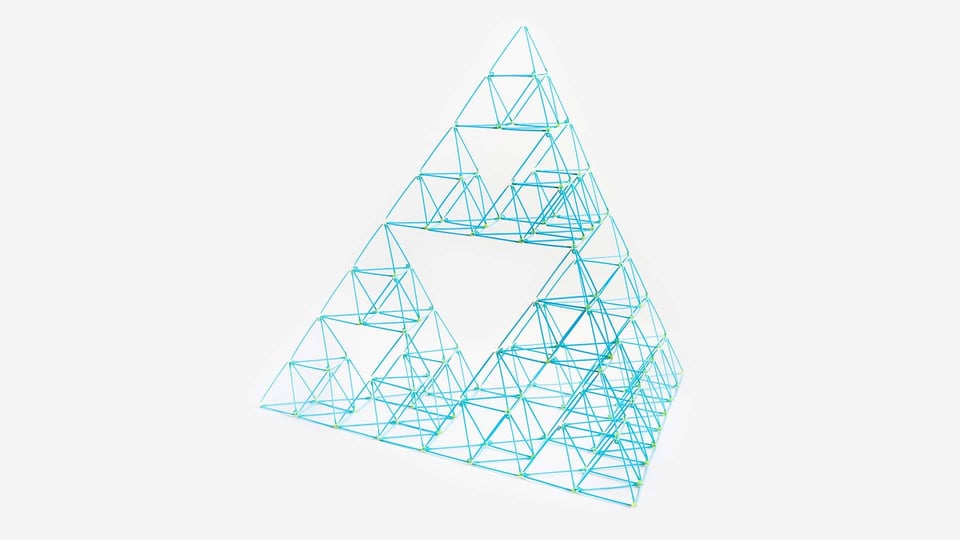 Sierpinski Pyramid Lesson - https://classroom.strawbees.com/resource/construct-sierpinski-pyramid-activity
Sierpinski Pyramid Lesson - https://classroom.strawbees.com/resource/construct-sierpinski-pyramid-activity
I’ve got to ask, what is the largest build you have ever done?
The largest build is a World Record in a really, really big maths lesson: The largest fractal structure made by learners, using Sierpinkski tetrahedrons! A pyramid kind of structure that was 70.2 meters tall and it is in the Guinness World Record. 1,200 learners built it over a two week period, after that, it had to be secured and quality controlled for safety reasons. We had cranes lifting the pyramids on top of each other. Another great build was a 9-meter-tall animated robot in Singapore. It looked like a marionette scaled-up version made of Strawbees. The interesting thing was that we had nine people trying to control it, so felt like it became alive as we couldn’t predict what it was going to do. It was super awesome and very agile.
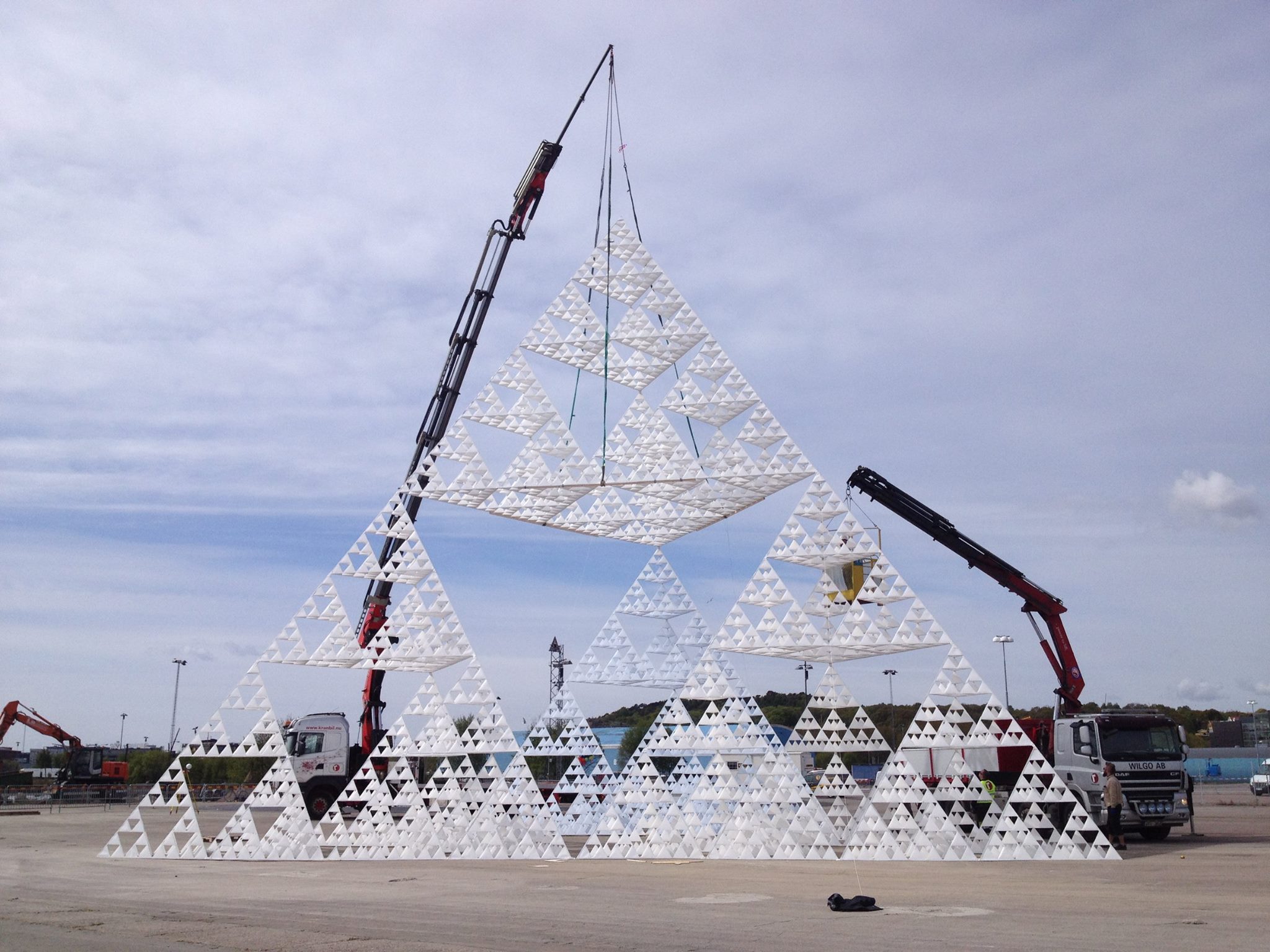 Guinness World Record Largest Pyramid - Photo credit: https://www.ollebjerkas.se/colossus
Guinness World Record Largest Pyramid - Photo credit: https://www.ollebjerkas.se/colossus
Erik's Great Teacher
Sounds like you would have loved being one of those learners who built that tetrahedron. When you were younger, what was your childhood experience? And what was secondary school like for you?
That’s the thing, one teacher can make such a big change. Our school system was very good and there was a lot of creativity. We were doing lots of crafts, we were combining subjects, and my secondary teacher was ahead of her time. This definitely influenced me. We were lucky to have a fantastic teacher and I’m still in contact with her.
Eureka Moment
What was the inspiration for Strawbees? Where does this idea come from?
There are a couple of inspirations here. The most influential one I would say was when I was working with the Rotary Club in Gothenburg and they asked me if I would go to India with them, bring my recycling machine and reuse any materials they have available there, basically making things from trash. I made a clothespin, using a very simple pattern. Clothespins in India are very useful, for outdoor solar drying spins., I could also make some other fun stuff with it such as cubes, tetrahedrons out of cardboard, platonic solids and so on. So I made these clothespins, a couple of thousand in neon colours and they loved the machine I was using. This is what they were missing, they didn’t have the construction tools.
There is something deep about this because kids love making things. That’s when the seed of that idea was planted when the pupils started building massive structures with these clothespins. I looked at the common materials - cardboard, plastic bottles, food packaging and of course drinking straws. That’s what we started out doing at Strawbees, building value in the material that was there and then building objects with them.
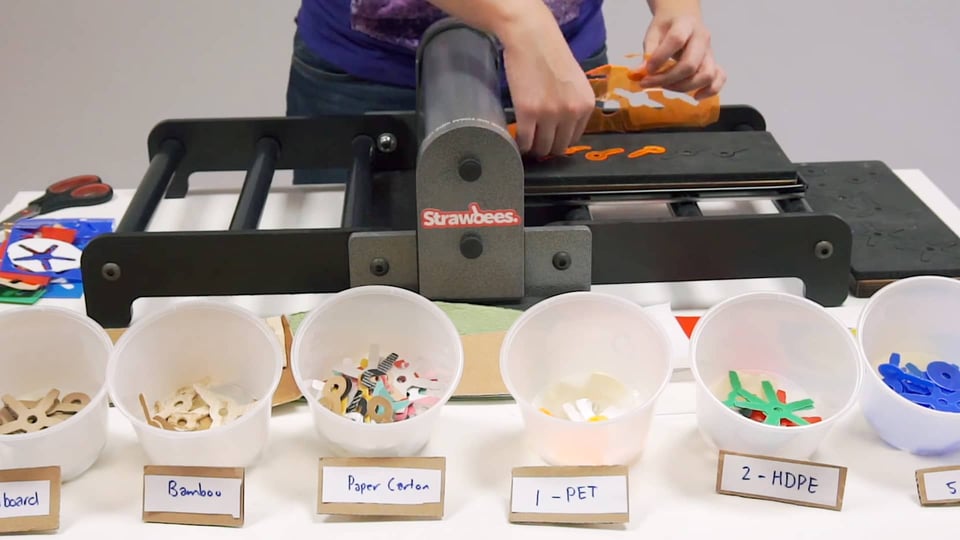 Strawbees Sustainability Station - https://shop.strawbees.com/cart/steam-products/sustainability-station
Strawbees Sustainability Station - https://shop.strawbees.com/cart/steam-products/sustainability-station
Rapid Prototyping for Kids
In many ways, Strawbees is that rapid prototyping system. How kids can get these ideas out of their minds into the physical world in a simple, creative and fast way. From this perspective, it is much more than just a construction system.
Exactly, it has the power to pull ideas out of the kids’ minds! We want to make them feel like: ‘Wow, this is awesome, I made this thing and I can use it. But it isn’t just a simple, fun game. It is a serious, very fast process they go through. These skills are valuable in any field when they start observing the object they made, what works and more importantly, what doesn’t.
The change in mindset comes from not rebuilding it from scratch, just making those tweaks and amendments, because the system is not sequential, you can approach it from any angle in space, you can approach it from this side, from here and there.
Strawbees & micro:bit
What about the future, robotics and coding are now seen as a critical educational learning experience. How are you integrating this into your Strawbees system and kits?
We are already seeing fluency in a lot of kids with coding through the micro:bit technology. So it makes sense to combine the two - a Strawbees build and a micro:bit code. Learners are combining those already gained coding skills and getting a physical output (using Strawbees). It is an amazing extension of our offering as it allows learners to make more engineered, inventive solutions with the added complexity of getting the coding right and if it’s not right, exploring the failures and correcting them. As it is much more accessible now, kids are far more confident in the world of block programs, so combining this with a static structure makes things come to life even more.
My favourite feature of the micro:bit is the radio because it is really good for prototyping and making all these awesome animated objects. Then you go back to make something, for example, an automatic industrial robot, it might sound boring but it is fun when you make this yourself from scratch in a 30 to 40-minute build. This is super exciting, combining something that the kids are comfortable with (block coding) and a system (Strawbees) that can hold their attention long enough to implement their ideas in a fast and engaging way.
Discover more of Erik’s playful world at his School of Ridiculous Inventions via Strawbees Classroom:
You May Also Like
These Related Stories

Unveiling the Essentials: What Makes a STEM Resource 'Teacher-Ready'

Top 7 Tips for Using Strawbees Classroom
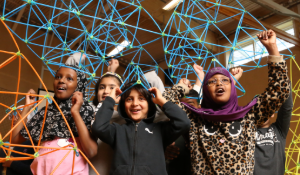


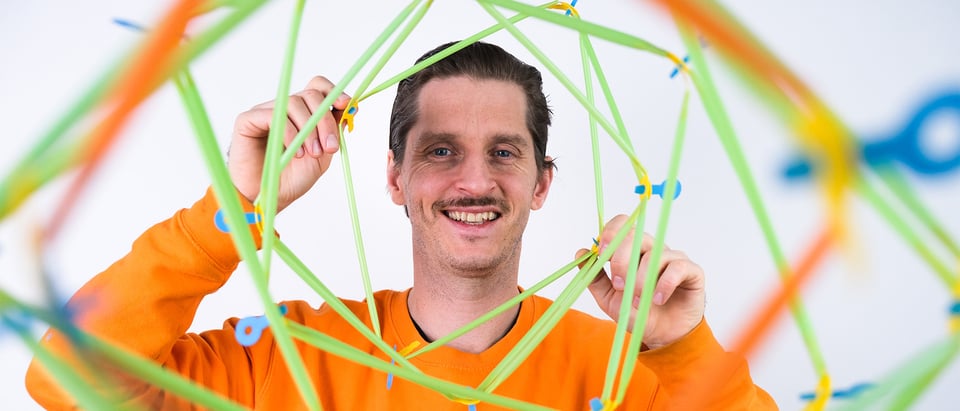

No Comments Yet
Let us know what you think